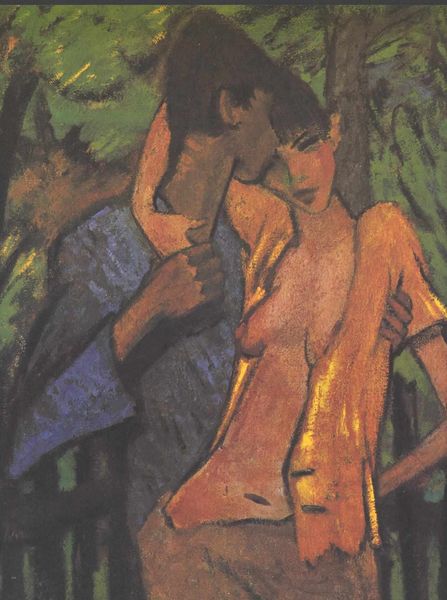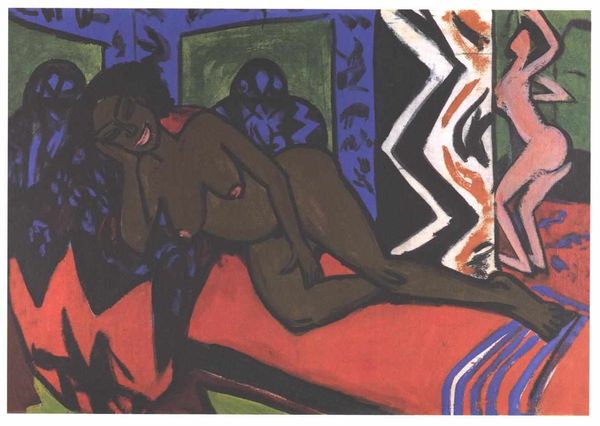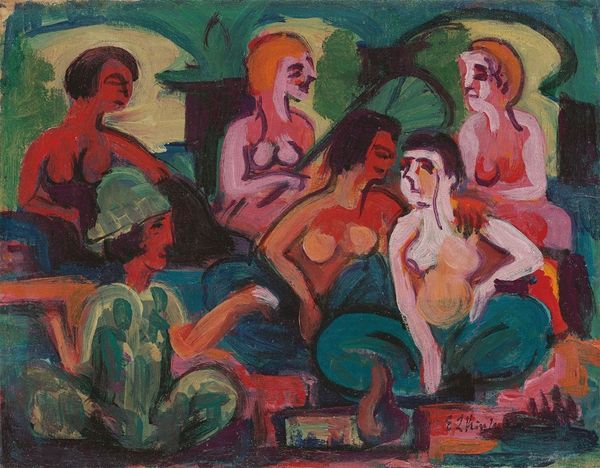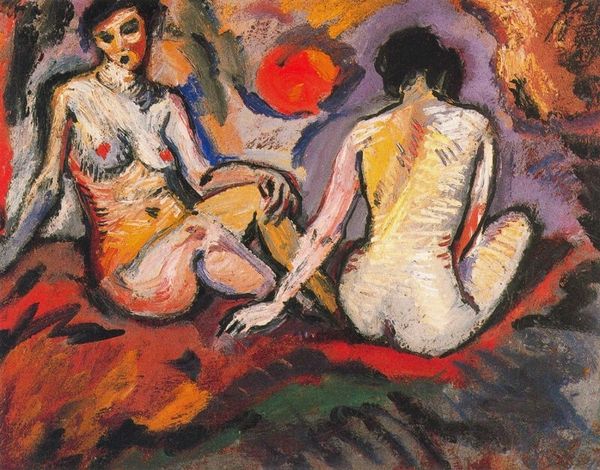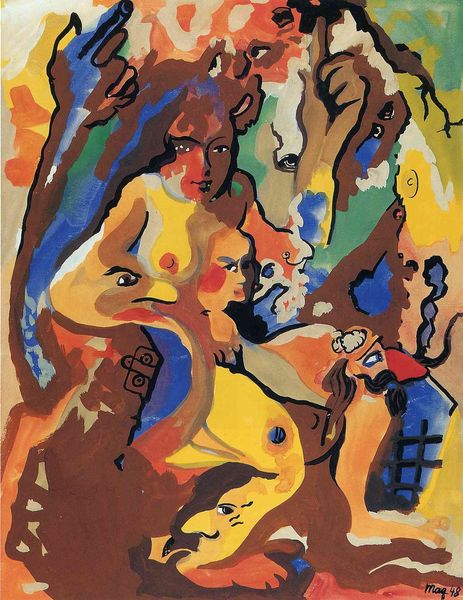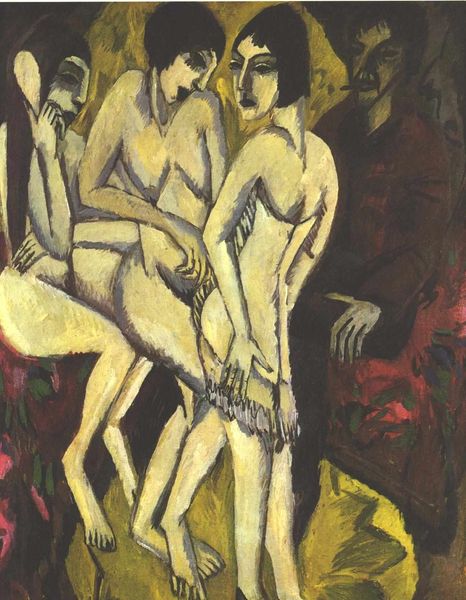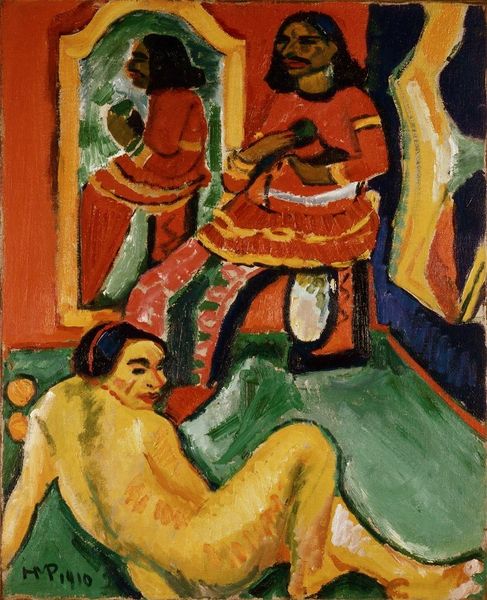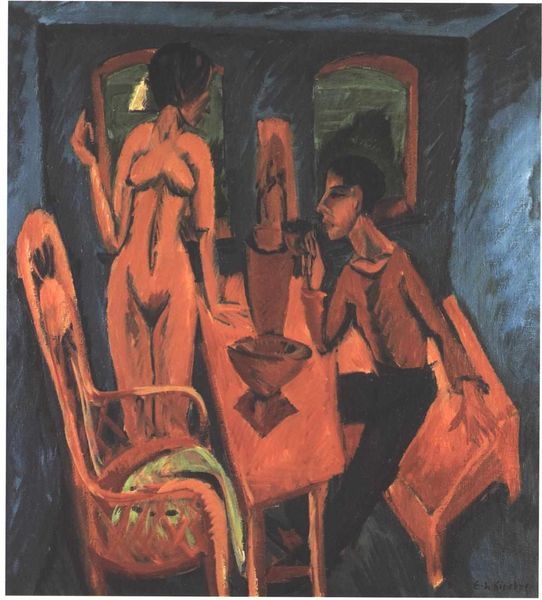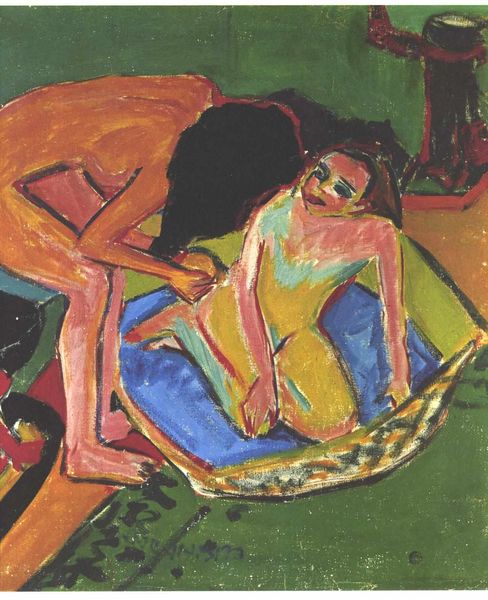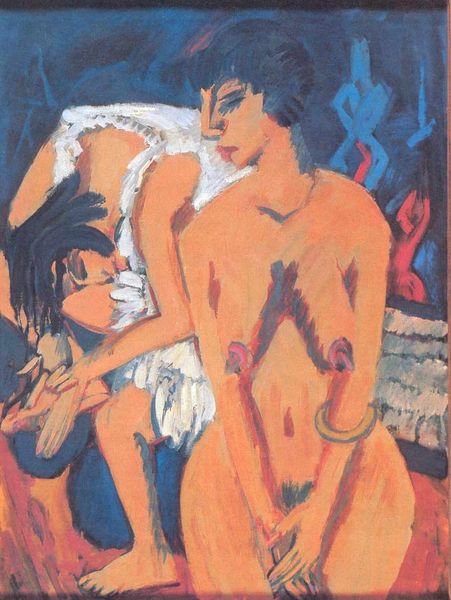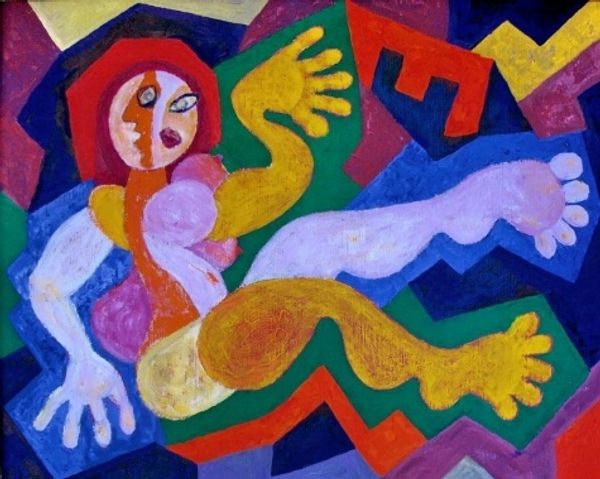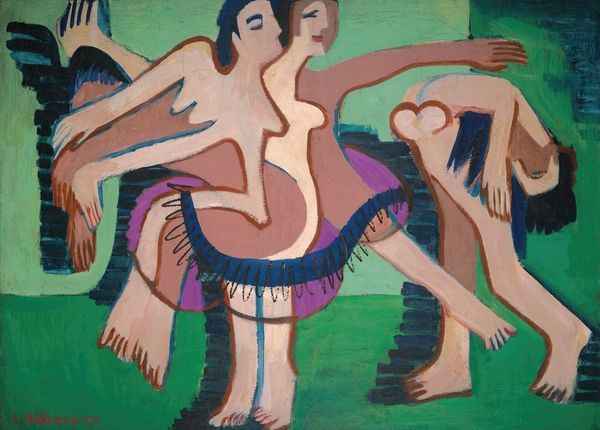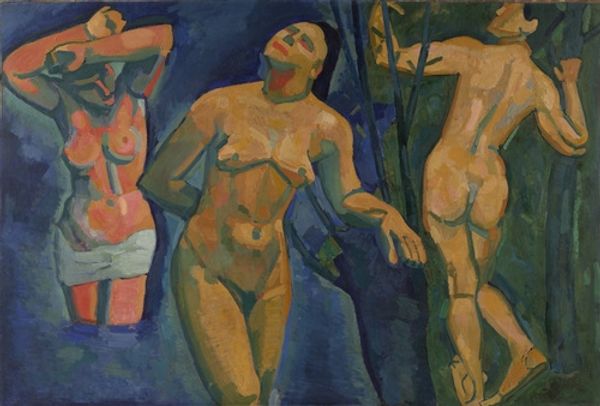
Copyright: Endre Bartos,Fair Use
Editor: This acrylic painting, "Hungarian Gipsies," was created in 1972 by Endre Bartos. The colors are intense, almost jarring, and the figures are stylized in a way that makes me think of early modernism. What are your first impressions from a formal perspective? Curator: Note how the artist has distributed non-naturalistic colors. The bright yellows, blues and reds exist almost independently of the figures. Do you notice how this separation alters your perception of the composition? Editor: I do see that, it’s as if the subjects are not part of a cohesive scene, yet it all connects through repeated patterns. I'm curious how Bartos created these links using similar brush strokes across each of the elements. Curator: Precisely. Notice how Bartos’ brushstrokes are assertive, bordering on chaotic? Do you see how they generate visual tempo? It produces what Deleuze calls a 'smooth space' in opposition to the ‘striated space’ of classical perspective. Editor: I can see that; rather than creating depth, the paint is built up to create this vibrant texture. Do you think this use of bold colors and visible brushstrokes is inspired by Fauvism or Expressionism? Curator: Indubitably, we see reflections of both art movements. But Bartos isn’t simply imitating; the figures’ exaggerated poses introduce a uniquely surreal dimension. The faces become planes upon which he investigates semiotic themes. Editor: That's fascinating, I hadn't considered that the composition is really about the language of the bodies and colors. This new way of looking helps me to appreciate his technical approach more! Curator: I concur. The value in deconstructing an artist's choices is that one appreciates more deeply how the painting engages with a formalist reading. We now move into Bartos' work armed with semiotic awareness.
Comments
No comments
Be the first to comment and join the conversation on the ultimate creative platform.
